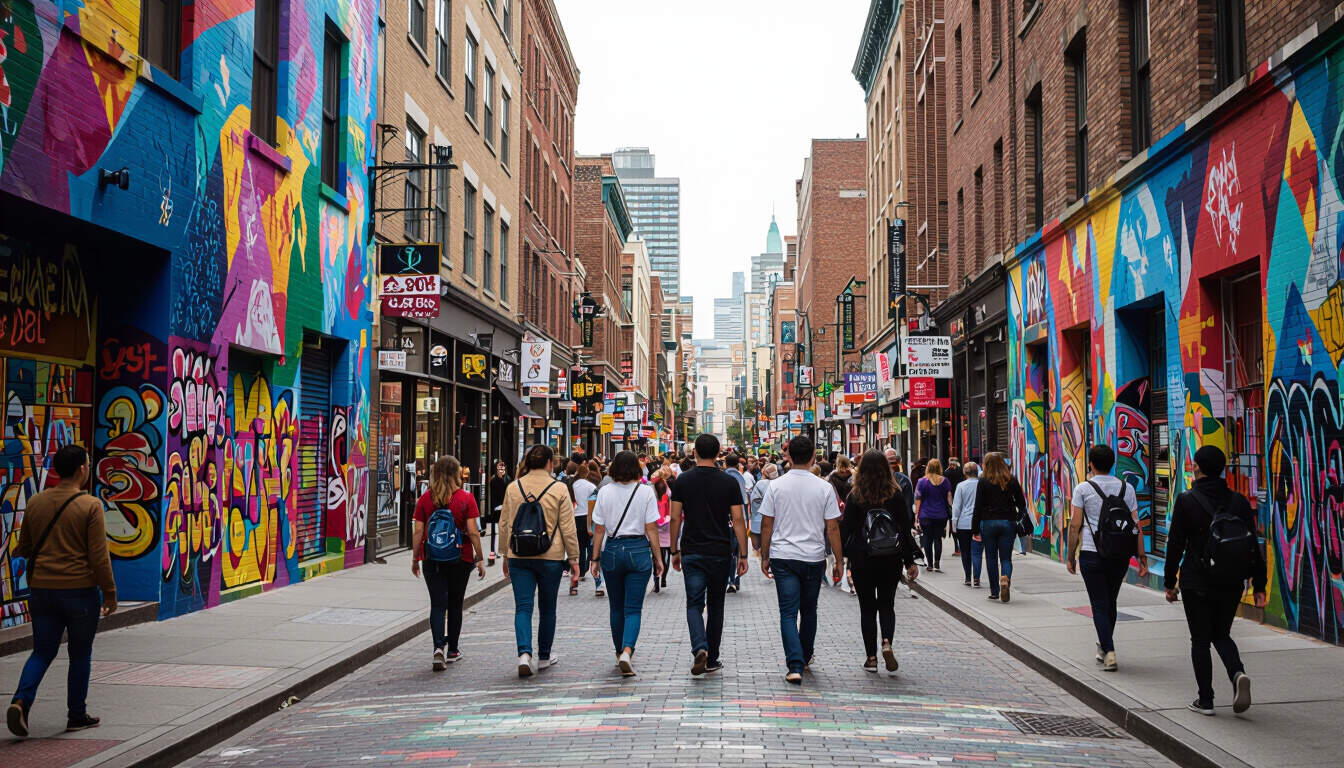Guerrilla PR Through Low-Cost Street Art Tours for Niche Markets
 by Lilian Nienow
by Lilian Nienow
Discover how small businesses can use low-cost street art tours as a clever PR tactic to build brand visibility in niche markets. This approach offers creative ways to connect with audiences, foster community engagement, and drive growth without high expenses.

Low-cost street art tours present an innovative way for small businesses to gain attention in niche markets. These tours turn public spaces into dynamic platforms for guerrilla PR, allowing entrepreneurs to showcase their brands creatively.
Street art tours involve guiding participants through areas with murals and graffiti, weaving in stories that tie back to a business's identity. For niche markets like local artisans or eco-friendly products, this method creates memorable experiences that resonate with specific audiences.
One key advantage is the affordability. By partnering with local artists or community groups, businesses can organize these tours for minimal cost. Materials like printed maps or simple signage keep expenses low, making it accessible for startups.
To start, businesses should identify relevant locations. Urban areas with vibrant street art scenes provide ideal backdrops. For instance, a coffee shop specializing in fair-trade beans might highlight murals that reflect sustainability themes, drawing in eco-conscious consumers.
Organizing the tour requires basic planning. Select a route that aligns with the brand's message and invite participants through social media or email lists. This builds anticipation and encourages word-of-mouth sharing, amplifying PR efforts naturally.
In practice, a boutique clothing store could collaborate with street artists to create custom designs inspired by local culture. During the tour, participants learn about the art while discovering the store's products, fostering direct engagement.
Businesses often overlook the community aspect. Street art tours can strengthen local ties by involving residents as guides or contributors. This not only enhances authenticity but also positions the brand as a community supporter.
Steps for Effective Implementation
Here are practical steps to get started:
-
Research and Select Locations: Scout areas with existing street art that matches your brand. Focus on spots that attract your target demographic, such as trendy neighborhoods for youth-oriented products.
-
Build Partnerships: Work with local artists or cultural organizations. These collaborations add credibility and keep costs down, turning the tour into a shared initiative.
-
Create Engaging Content: Develop a narrative that links the art to your business. Use storytelling to highlight product features or values, making the experience educational and fun.
-
Promote the Event: Use free or low-cost channels like social platforms to spread the word. Encourage attendees to share their experiences, creating organic buzz.
-
Measure Impact: Track attendance and feedback to gauge success. Follow up with participants to build lasting relationships, potentially turning them into loyal customers.
Real-World Inspiration
Consider a fictional example of a handmade jewelry brand in a small town. By hosting a street art tour featuring murals with nature motifs, the brand ties its eco-friendly materials to the art's themes. Participants leave with a deeper appreciation, often sharing photos online, which boosts visibility.
Another angle is adapting tours for digital formats. Businesses can create virtual versions using photos or videos, reaching a wider audience without physical costs. This hybrid approach suits niche markets with online communities, like digital nomads or remote workers.
Challenges may arise, such as weather or permissions, but these can be managed with flexibility. Choose dates carefully and secure any necessary approvals in advance to ensure smooth execution.
Ultimately, the appeal of street art tours lies in their ability to surprise and delight. They offer a fresh alternative to traditional advertising, helping businesses stand out in crowded markets.
By integrating these tactics, entrepreneurs can foster growth through genuine connections. The key is to stay adaptable and innovative, ensuring each tour reflects the brand's unique story.
